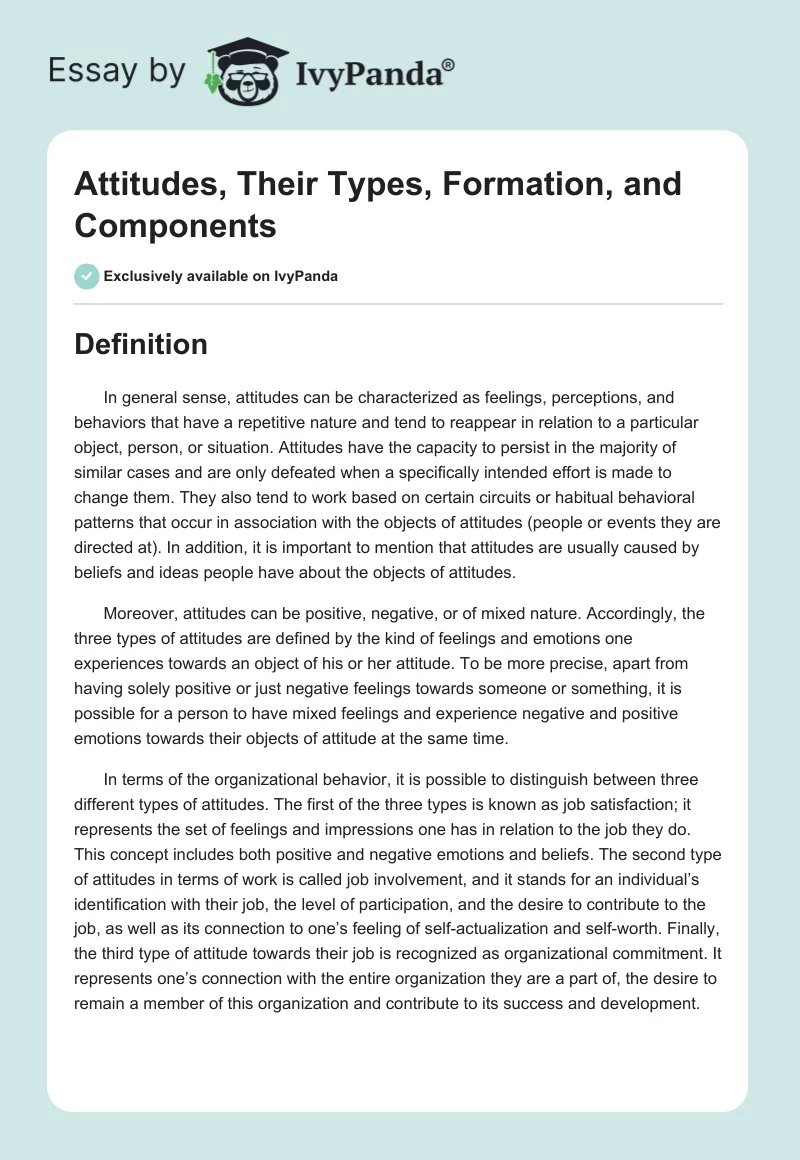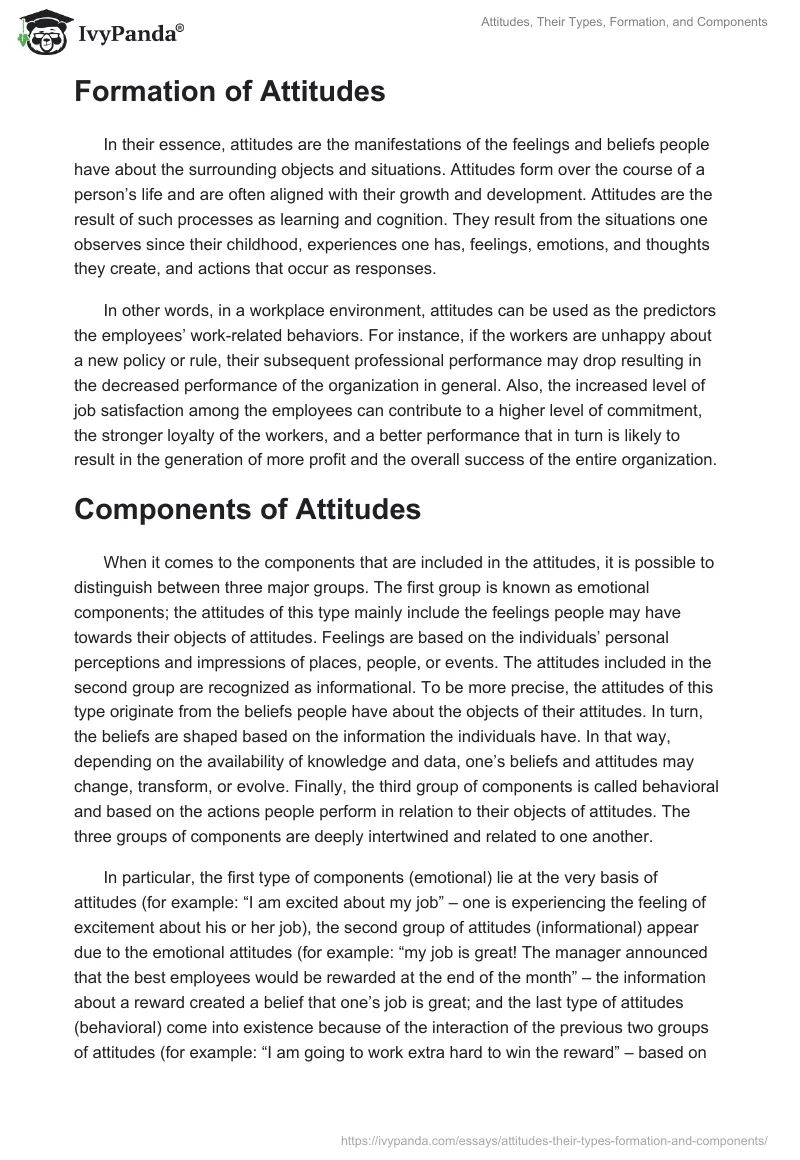Definition
In general sense, attitudes can be characterized as feelings, perceptions, and behaviors that have a repetitive nature and tend to reappear in relation to a particular object, person, or situation. Attitudes have the capacity to persist in the majority of similar cases and are only defeated when a specifically intended effort is made to change them. They also tend to work based on certain circuits or habitual behavioral patterns that occur in association with the objects of attitudes (people or events they are directed at). In addition, it is important to mention that attitudes are usually caused by beliefs and ideas people have about the objects of attitudes.
Moreover, attitudes can be positive, negative, or of mixed nature. Accordingly, the three types of attitudes are defined by the kind of feelings and emotions one experiences towards an object of his or her attitude. To be more precise, apart from having solely positive or just negative feelings towards someone or something, it is possible for a person to have mixed feelings and experience negative and positive emotions towards their objects of attitude at the same time.
In terms of the organizational behavior, it is possible to distinguish between three different types of attitudes. The first of the three types is known as job satisfaction; it represents the set of feelings and impressions one has in relation to the job they do. This concept includes both positive and negative emotions and beliefs. The second type of attitudes in terms of work is called job involvement, and it stands for an individual’s identification with their job, the level of participation, and the desire to contribute to the job, as well as its connection to one’s feeling of self-actualization and self-worth. Finally, the third type of attitude towards their job is recognized as organizational commitment. It represents one’s connection with the entire organization they are a part of, the desire to remain a member of this organization and contribute to its success and development.
Formation of Attitudes
In their essence, attitudes are the manifestations of the feelings and beliefs people have about the surrounding objects and situations. Attitudes form over the course of a person’s life and are often aligned with their growth and development. Attitudes are the result of such processes as learning and cognition. They result from the situations one observes since their childhood, experiences one has, feelings, emotions, and thoughts they create, and actions that occur as responses.
In other words, in a workplace environment, attitudes can be used as the predictors the employees’ work-related behaviors. For instance, if the workers are unhappy about a new policy or rule, their subsequent professional performance may drop resulting in the decreased performance of the organization in general. Also, the increased level of job satisfaction among the employees can contribute to a higher level of commitment, the stronger loyalty of the workers, and a better performance that in turn is likely to result in the generation of more profit and the overall success of the entire organization.
Components of Attitudes
When it comes to the components that are included in the attitudes, it is possible to distinguish between three major groups. The first group is known as emotional components; the attitudes of this type mainly include the feelings people may have towards their objects of attitudes. Feelings are based on the individuals’ personal perceptions and impressions of places, people, or events. The attitudes included in the second group are recognized as informational. To be more precise, the attitudes of this type originate from the beliefs people have about the objects of their attitudes. In turn, the beliefs are shaped based on the information the individuals have. In that way, depending on the availability of knowledge and data, one’s beliefs and attitudes may change, transform, or evolve. Finally, the third group of components is called behavioral and based on the actions people perform in relation to their objects of attitudes. The three groups of components are deeply intertwined and related to one another.
In particular, the first type of components (emotional) lie at the very basis of attitudes (for example: “I am excited about my job” – one is experiencing the feeling of excitement about his or her job), the second group of attitudes (informational) appear due to the emotional attitudes (for example: “my job is great! The manager announced that the best employees would be rewarded at the end of the month” – the information about a reward created a belief that one’s job is great; and the last type of attitudes (behavioral) come into existence because of the interaction of the previous two groups of attitudes (for example: “I am going to work extra hard to win the reward” – based on one’s positive feeling about their job and the information that a high performance would be rewarded, one is going to work with an extra effort). In addition, it is important to mention that the components of behavioral nature lie at the very surface and thus are the most obvious to the observers of attitudes.


